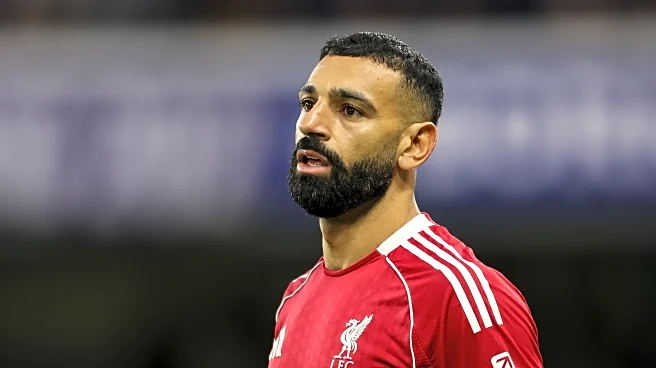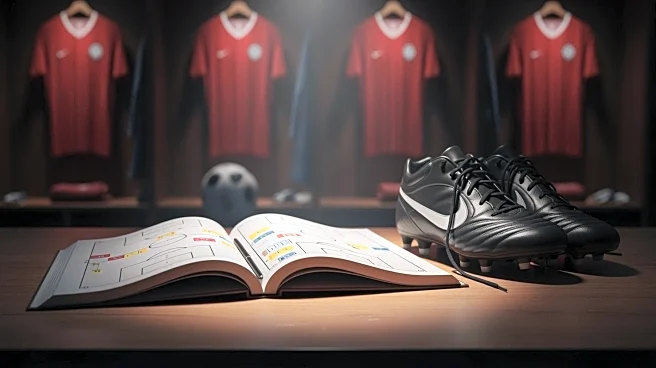What's Happening?
Manchester United, under manager Ruben Amorim, is preparing to face Liverpool with a back three formation, a strategy that has been criticized but may prove advantageous against Liverpool's current vulnerabilities.
Liverpool has struggled against teams deploying a back three, as evidenced by their recent performances against Crystal Palace. Amorim's system, which emphasizes defensive solidity and quick transitions, could exploit Liverpool's weaknesses, particularly in wide areas. United's previous success at Anfield, where they secured a draw using this strategy, provides a blueprint for their upcoming match.
Why It's Important?
The tactical approach of Manchester United could significantly impact the outcome of their match against Liverpool. If successful, Amorim's strategy could reinforce the effectiveness of a back three formation against teams like Liverpool, potentially influencing other teams to adopt similar tactics. This match is crucial for United, as a victory could boost their confidence and standing in the Premier League. For Liverpool, overcoming this tactical challenge is essential to regain momentum and address their current defensive issues.
What's Next?
Manchester United will focus on executing their back three strategy effectively, using wing-backs to create overloads and capitalize on Liverpool's defensive gaps. The match will test Amorim's ability to adapt his tactics to exploit Liverpool's weaknesses. A successful outcome could lead to increased adoption of similar strategies by other teams facing Liverpool. For Liverpool, the match presents an opportunity to address their tactical vulnerabilities and make necessary adjustments to counter United's approach.
Beyond the Headlines
The use of a back three formation by Manchester United highlights broader tactical trends in football, emphasizing the importance of adaptability and strategic innovation. The effectiveness of this approach against Liverpool could influence future tactical decisions by teams facing similar challenges. The match serves as a case study in the evolving dynamics of football strategy, showcasing the impact of tactical flexibility and the importance of exploiting opponent weaknesses.












